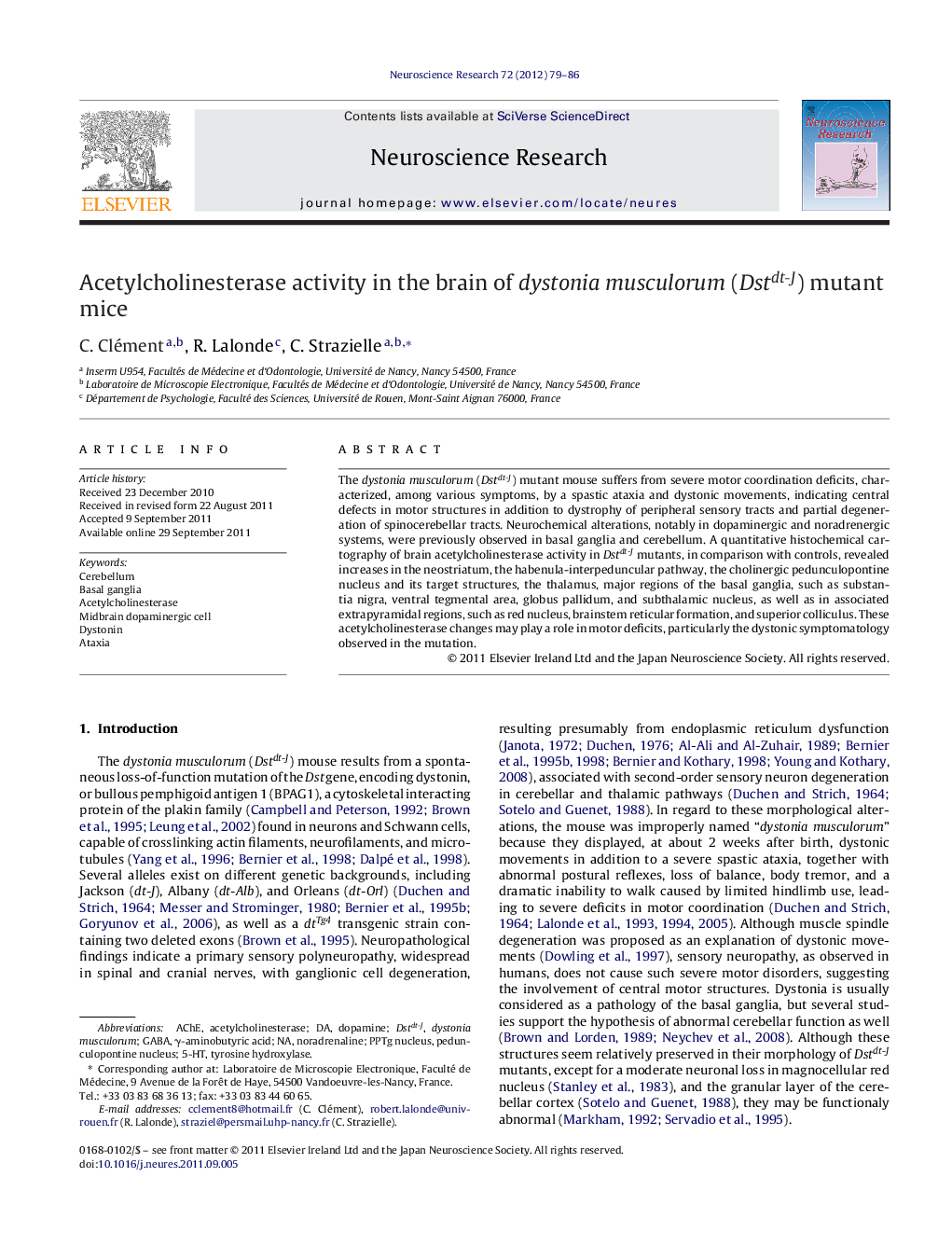| Article ID | Journal | Published Year | Pages | File Type |
|---|---|---|---|---|
| 4351761 | Neuroscience Research | 2012 | 8 Pages |
The dystonia musculorum (Dstdt-J) mutant mouse suffers from severe motor coordination deficits, characterized, among various symptoms, by a spastic ataxia and dystonic movements, indicating central defects in motor structures in addition to dystrophy of peripheral sensory tracts and partial degeneration of spinocerebellar tracts. Neurochemical alterations, notably in dopaminergic and noradrenergic systems, were previously observed in basal ganglia and cerebellum. A quantitative histochemical cartography of brain acetylcholinesterase activity in Dstdt-J mutants, in comparison with controls, revealed increases in the neostriatum, the habenula-interpeduncular pathway, the cholinergic pedunculopontine nucleus and its target structures, the thalamus, major regions of the basal ganglia, such as substantia nigra, ventral tegmental area, globus pallidum, and subthalamic nucleus, as well as in associated extrapyramidal regions, such as red nucleus, brainstem reticular formation, and superior colliculus. These acetylcholinesterase changes may play a role in motor deficits, particularly the dystonic symptomatology observed in the mutation.
Graphical abstractFigure optionsDownload full-size imageDownload high-quality image (83 K)Download as PowerPoint slideHighlights► New data on brain neurochemistry in Dstdt-J mutant mice. ► New data for explaining the dystonic movements in the Dstdt-J mice. ► Striatal dysfunction in an animal model of spinocerebellar ataxia.
